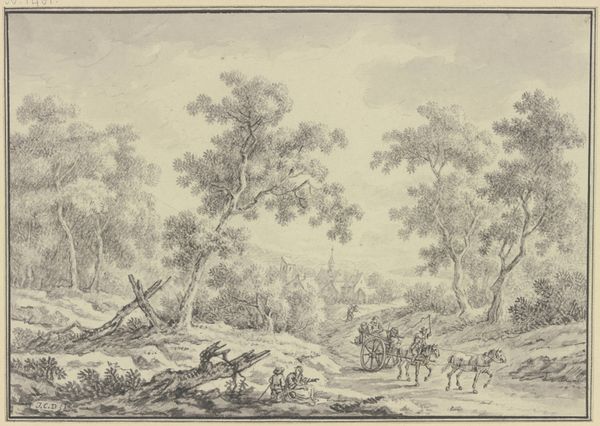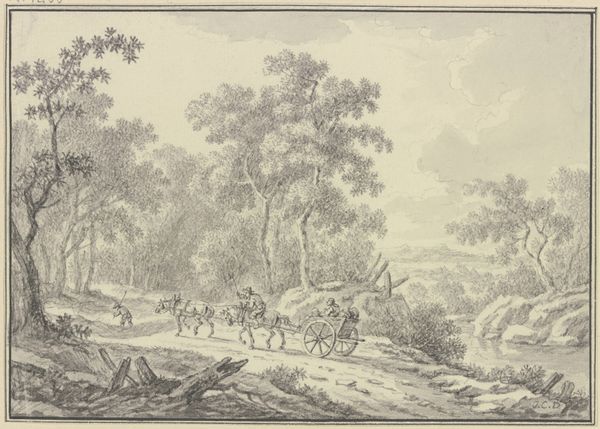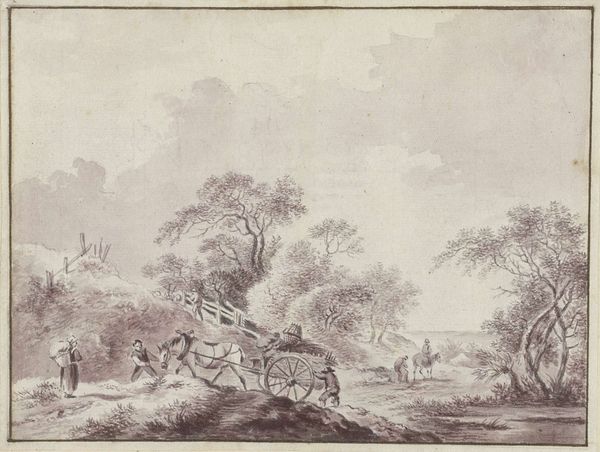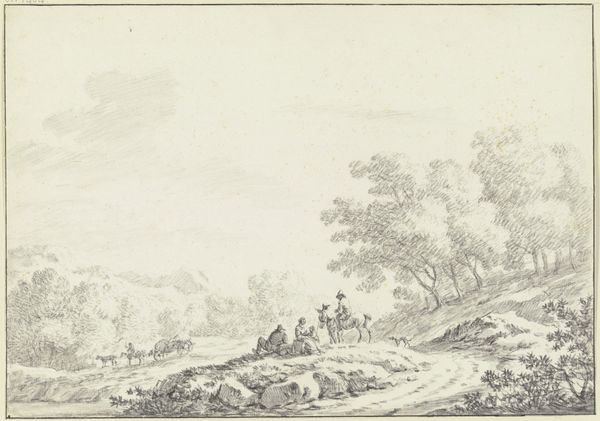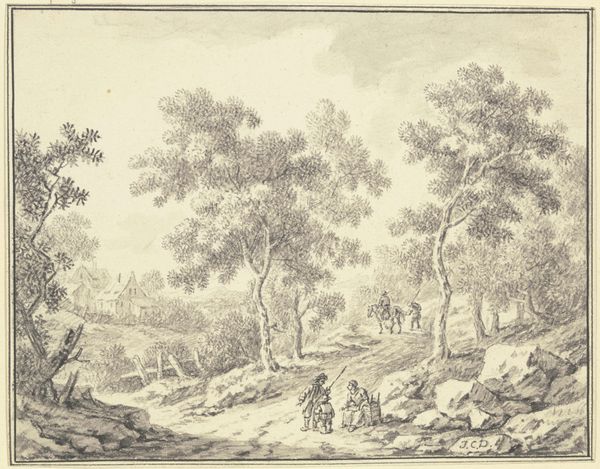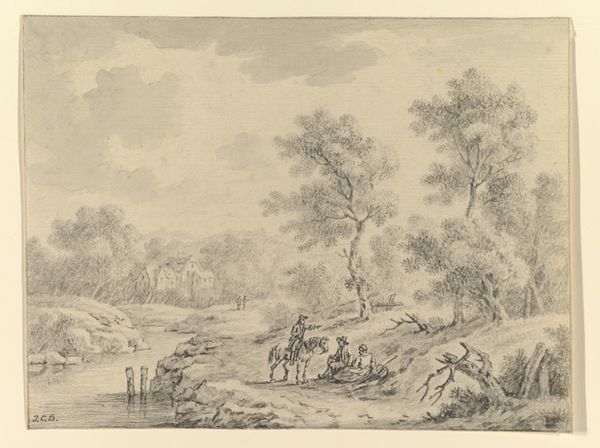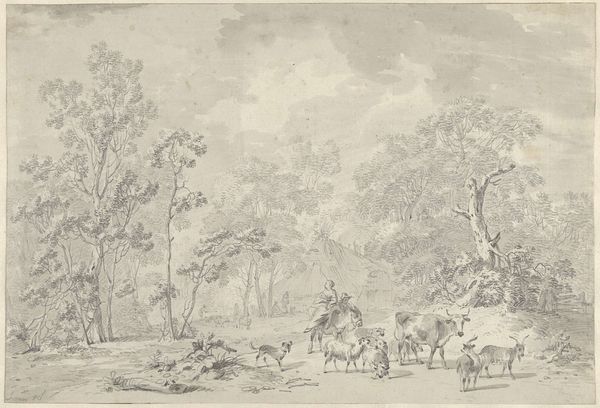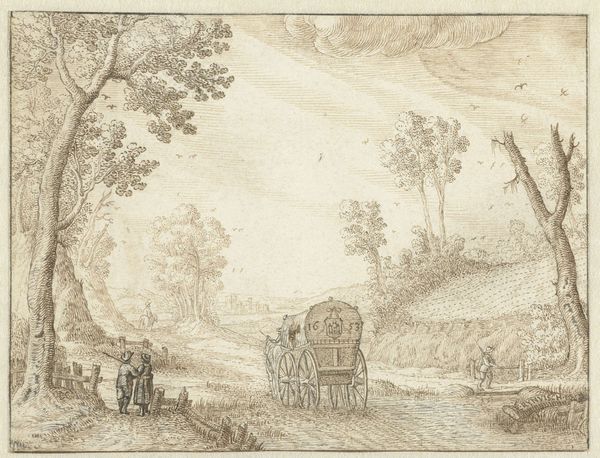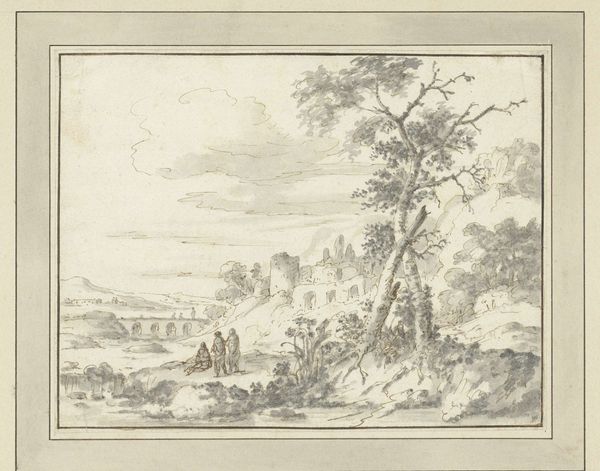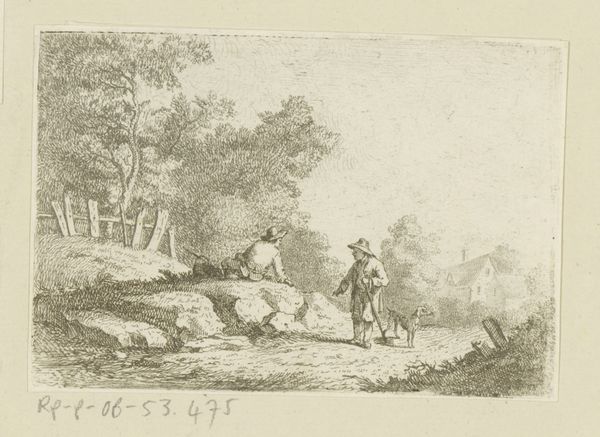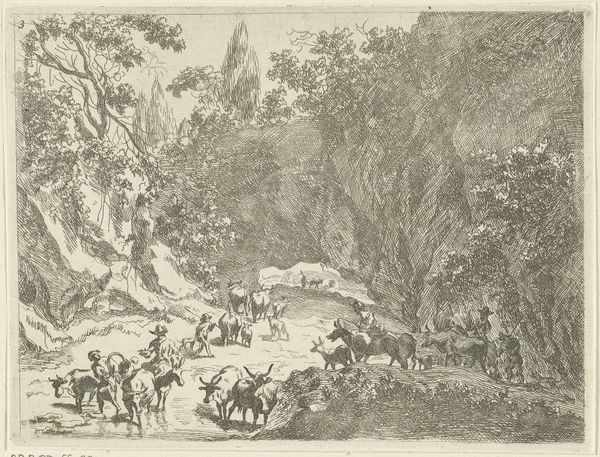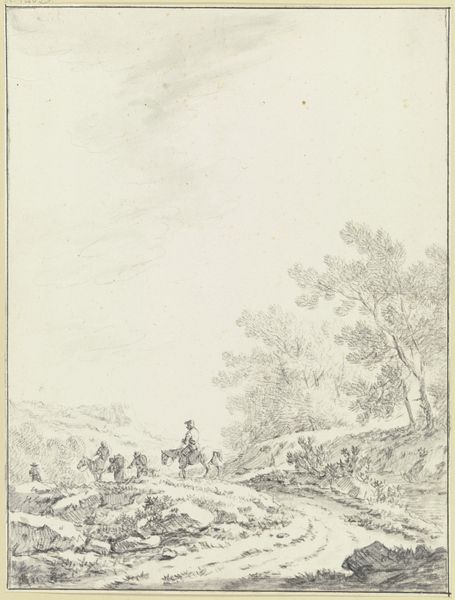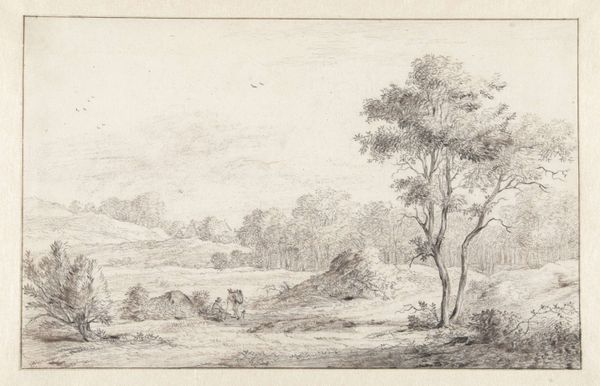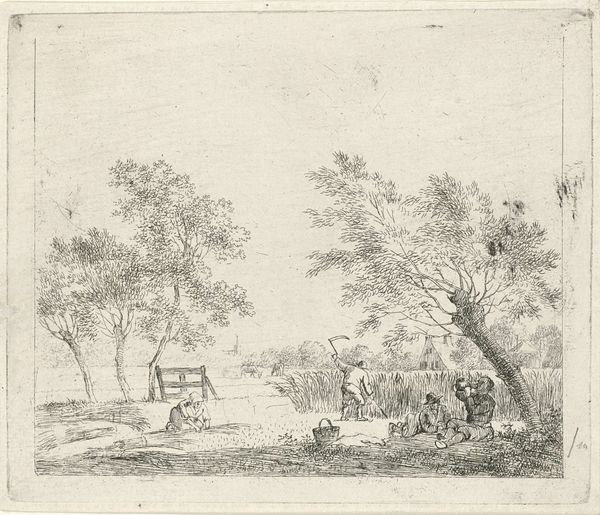
Bewaldete hügelige Landschaft, in der Mitte eine Baumgruppe, hinter der Häuser liegen, im Vordergrund ein Mann und eine Frau zu Pferde mit zwei Begleitern zu Fuß
0:00
0:00
drawing, ink, pencil, chalk
#
drawing
#
baroque
#
pen drawing
#
landscape
#
figuration
#
personal sketchbook
#
ink
#
pencil
#
chalk
#
15_18th-century
#
line
#
academic-art
Copyright: Public Domain
Curator: Immediately, I notice a distinct calmness about this landscape. There's an elegance to the drawing, almost as if witnessing a memory unfolding before me. What is your first impression? Editor: An old postcard found in someone's attic, slightly faded and imbued with quiet dignity. The delicate lines create a sense of intimacy—you can almost smell the damp earth and hear the rustle of leaves. Curator: I can certainly see that. Let’s delve a little deeper. This piece is called "Bewaldete hügelige Landschaft, in der Mitte eine Baumgruppe, hinter der Häuser liegen, im Vordergrund ein Mann und eine Frau zu Pferde mit zwei Begleitern zu Fuß", which translates to “Wooded hilly landscape, in the middle a group of trees, behind which houses lie, in the foreground a man and a woman on horseback with two companions on foot." Editor: Oh wow, that's quite a descriptive title! It certainly leaves little to the imagination. Though I get the impression this might have been an on-the-spot sketch from someone's sketchbook. Is there a clue for us there? Curator: Possibly. It comes to us from Johann Christoph Dietzsch, an 18th-century artist, though we don't know precisely when it was executed. Looking closer, you see it's rendered with pencil, chalk and ink on paper – rather subtly I think. Notice the hierarchy though; riders on horses at the fore with footmen accompanying them. How might the social context impact what we are seeing? Editor: Exactly, and even those foreground trees become markers of cultivation. Everything speaks of control and privilege, almost staged. However, this drawing, if we may think about it like this, becomes not simply documentation but a construction of authority. Curator: An astute observation! Notice also the almost idyllic quality in the rendering of the distant village, nestled amidst the trees, promising tranquility. Do you find this scene entirely convincing? Editor: I don't know. Those stumps at the forefront certainly indicate a level of intervention – maybe the loss of some great copse – so maybe there is a tinge of melancholy that offsets the idealism. Still, an ideal for someone – for Dietzsch – and I suppose for many of the time. Curator: I find your sensitivity inspiring! Now, what do we make of its ongoing resonance? Does its value lie in the narrative it evokes, or in its mastery of line and form? Editor: For me, it's a portal. Not just to a landscape but also to the intricate network of human stories and symbols that shape how we perceive the world around us.
Comments
No comments
Be the first to comment and join the conversation on the ultimate creative platform.
